VEDIKA LALL / WORK / MESHWORK
Meshwork- A new way of Sensing
︎ Thresholds in Tapestries at Srishti Institute of Art, Design and Technology
︎ Duration: August- November 2018
CHALLENGE
Since the PBR (People's Biodiversity Register) isolates biodiversity in tables and boxes, this project proposes reimagining it through the creation of a meshwork and understanding how biodiversity is embedded in everyday mundane processes. The research questions were;
︎ How can one form conceptual frameworks of biological diversity and heritage regarding adaptive capacity, with insights from the design field?
︎How does the lens enable one to see biodiversity wealth beyond commerce and commodification and embrace its cultural values and often disappearing or changing knowledge?
︎How can narratives be woven around this dynamic knowledge while looking beyond the linear structure of documentation?
SOLUTION
Meshwork is a novel way of approaching the field, conducting design research for witnessing and experiencing the landscape and recording data through the lens of movement. The premise was to approach the landscape with no preconceived notions or assumptions. Unlike the PBR, the Meshwork is a fluid and porous structure that allows for easy connection. The Meshwork is a conceptualised structure that allows for a new way of looking at the world while also bridging the gap between the living and non-living.
Meshwork and knot theory can have different connotations, and whether patterns are etched into or formed into a knot, it is critical to consider the various meanings. The powerful concepts are excellent for system design, and thus the process of observing and establishing the landscape as a meshwork of multiple movements has begun.
Tags:
--
Design Research
Design Anthropology
Field Research
Data Abstraction
Information Design
Mentors:
--
Deepta Sateesh
Featured:
--
Webinar, Design Thinking for Conservation, 2019︎︎︎
Documentation︎︎︎
--
Design Research
Design Anthropology
Field Research
Data Abstraction
Information Design
Mentors:
--
Deepta Sateesh
Featured:
--
Webinar, Design Thinking for Conservation, 2019︎︎︎
Documentation︎︎︎
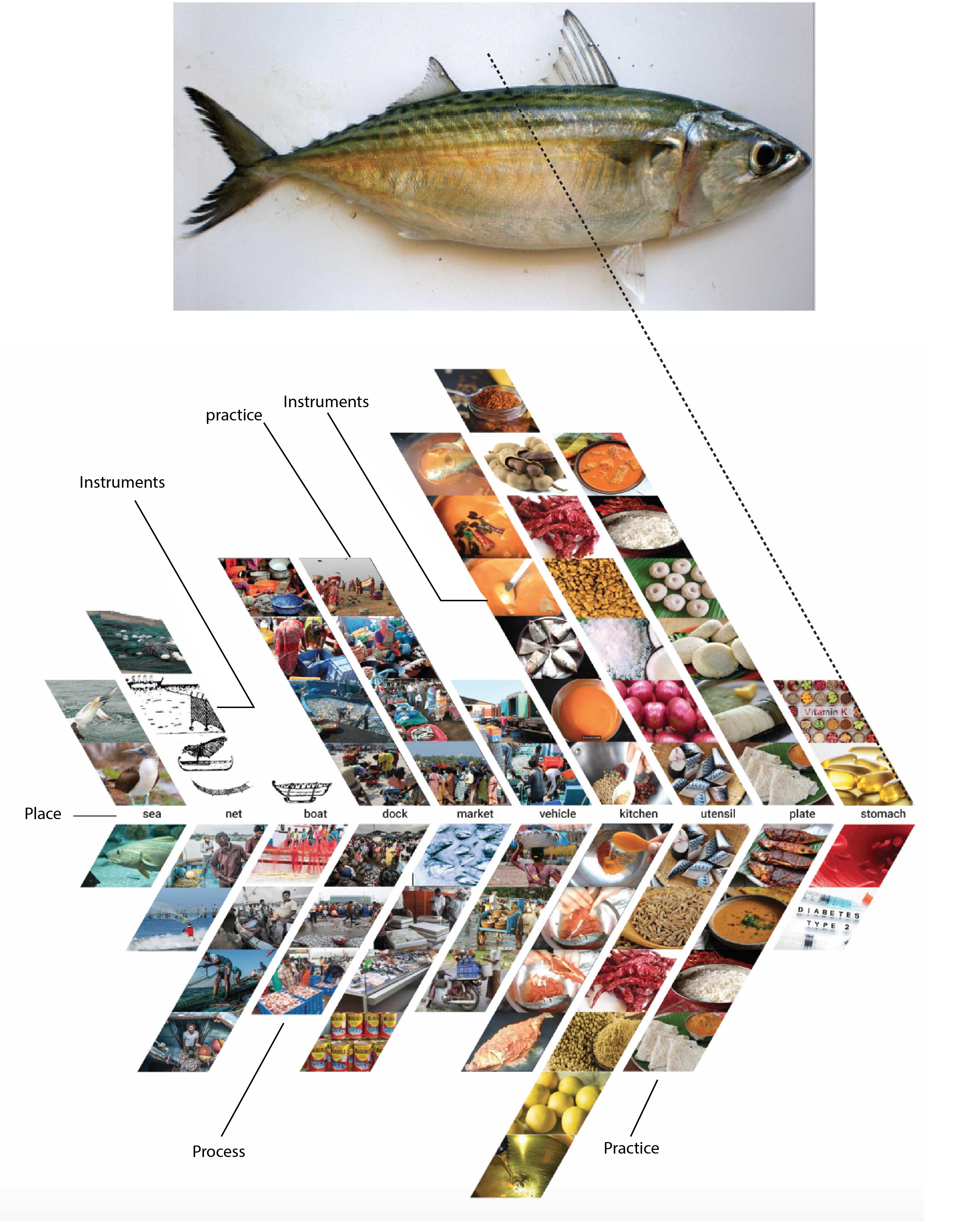
CREATION OF A PLOT
The plot is a device for creating and arranging information, photographs, drawings, and diagrams that aid in reimagining the landscape and seeing the field in a new light. The plot can also create a frame on which to anchor more contemporary data. Beginning an investigation into the landscape, mackerel was chosen as a specific thing. This design tool and research method were deployed to use a "specific thing" and find resonance with the larger landscape.
FORMING THE LENS
It’s an approach that lets one indulge in understanding the Western Ghats as a threshold, which caters to an amalgamation of complex movements and transformations, which bridges the dichotomy between time and space.
The spine of the plot determines the ‘places’ the Mackerel travels across time. The practice extends and evolves beyond the ground revealed in the place, making the ground of the Ghats complex with different movements interwoven in it. The structure of the plot is derived from the skeletal structure of the fish facing forward, which displays its’ transformation from the sea to the plate
IMMERSION INTO THE FIELD
While traversing through the Western Ghats, I sought movements that were steady, ongoing, and quotidian, and have cumulative transformations. A combination of sketches, digital photography, sketches, journal entries, and voice recordings was used to document the landscape. The field visit was an approach to looking at the landscape through the lens of ‘movements.’ The continuous, multiple processes, practices, instruments, and paths lead to bring out the dynamic nature and complexity of the Western Ghats.
The Western Ghats harbours a plethora of paths and movements. These movements may be temporal, constant or fluid in nature, creating multiple paths that converge or diverge at various points. The rain follows its’ organic path and is instrumental in creating newer paths daily for the dwellers to adapt. As I ruminate over my observations, I found simple, ephemeral movements which lead to complex transformations in places like temples, parks, fish ports, bus rides, and the practices of the inhabitants.

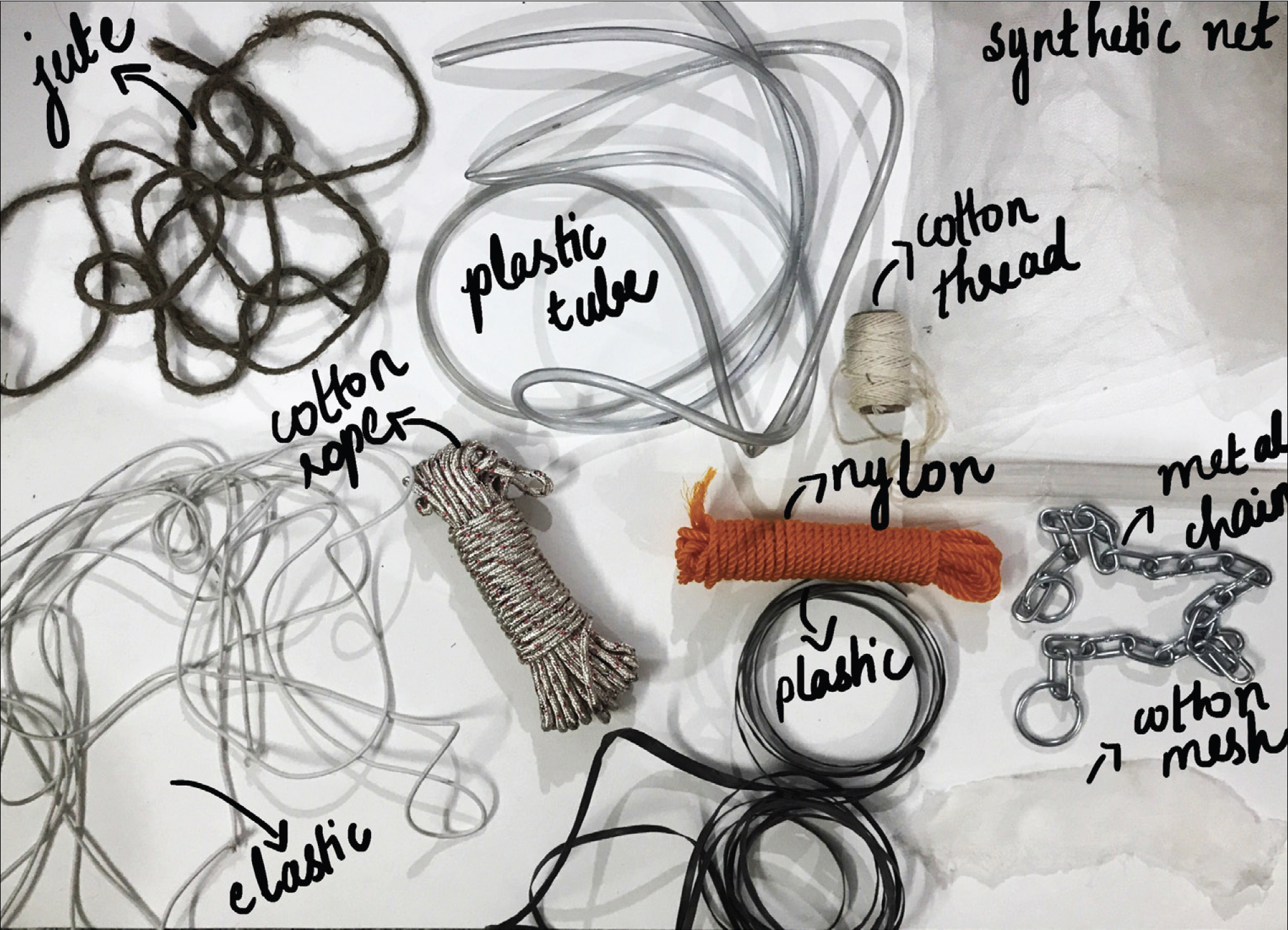
EXPLORING THE KNOT
Knots have symbolical, technical, and functional properties that are bound by the materials, techniques, and traditions of their manufacture. These knots are more complex, and different knots perform different functions, similar to how knots at different points in a meshwork attribute to different types of relationships. Memory is also represented by knots. This is indicated by the fact that the thread retracts after disassembly and retains the method in which it was knotted.
This investigation was furthered by the creation of a meshwork of various types of knots, which allowed for the observation and understanding of how ropes of various materials, such as jute, cotton, nylon, and plastic, interact with each other when tied in a knot. Some interactions are solid, while others unravel easily. Anthropological knots create a sense of endless entanglement; these are historically and socially framed entanglements, both conceptually and in practice.
INSIGHTS
Meshwork brings out the interconnectedness and coexistence between the human and the nonhuman. Inspired by Tim Ingold’s notion of the Meshwork, there are lines or the paths of movements that constantly engage with each other and are growing and evolving. The places where these paths entwine brings up the concept of knots which are cohesive places of navigation, negotiation, exchange, and interaction in a meshwork.
- A knot is a meeting point of routinely embodied routines within a landscape. A knot can also form from a rhythmic, repeated movement pattern.
-
A knot is a suitable location for production, navigation, negotiation, exchange, transformation, and spatial practices.
-
A knot is formed when movement paths entwine at a specific point in space and time.
-
A knot in a meshwork is fundamental to coherence.
- Knots serve as memory aids and can also serve as navigational landmarks.
- They are found between the lines.
- The more lines of life there are, the more knots there are.


DATA ABSTRACTION
Observing the conditions of places across time, scale, and practises, as well as their interrelationships, but as an inhabitant rather than an outsider. The first method is to examine the top section, which contains photographs from the field, and the second section, which contains the extraction of traces of these practices. The third section focuses on the practises that result in these traces on the ground. These abstractions show the spectrum of traces left by practices, from permanent to ephemeral. We understand the complexities and operations of movement through these abstractions.
It is not just one thing that moves, but a range of movements that make up a thing.

IMAGINING WESTERN GHATS AS A MESHWORK
The central concept is to examine the ethos of the Western Ghats' dynamic landscape and look for the extraordinary in mundane everyday processes. The Western Ghats are a field of distinct places revealed by the integral relationship of this one-of-a-kind process. Common ground is shared by multiple stakeholders and their continuous movements, which are essential in the transformation process.
Knots are places in this meshwork were lines of becoming bind together, explaining the continuity and sustainability of life. Every location is a knot in a web. Lines represent the paths. Human existence is not limited to a specific location and unfolds over time. Where these paths intersect, they become entwined with other people's lives. Knots are complicated structures with a memory of their formation. This concept can lead to a better understanding of systems that surprise us with unexpected qualities. The meshwork allows one to comprehend and see the uncharted paths of this dynamic landscape.

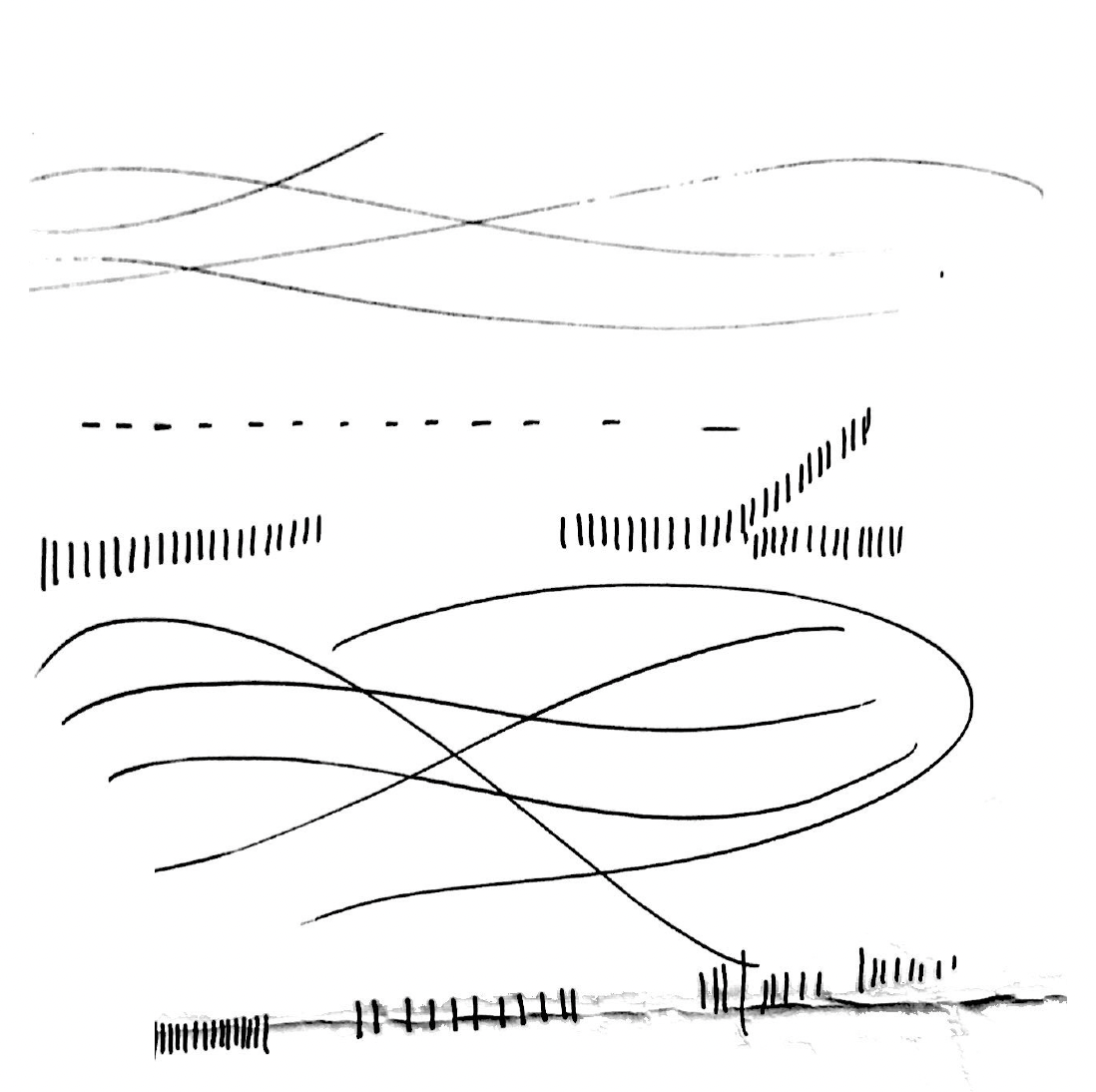
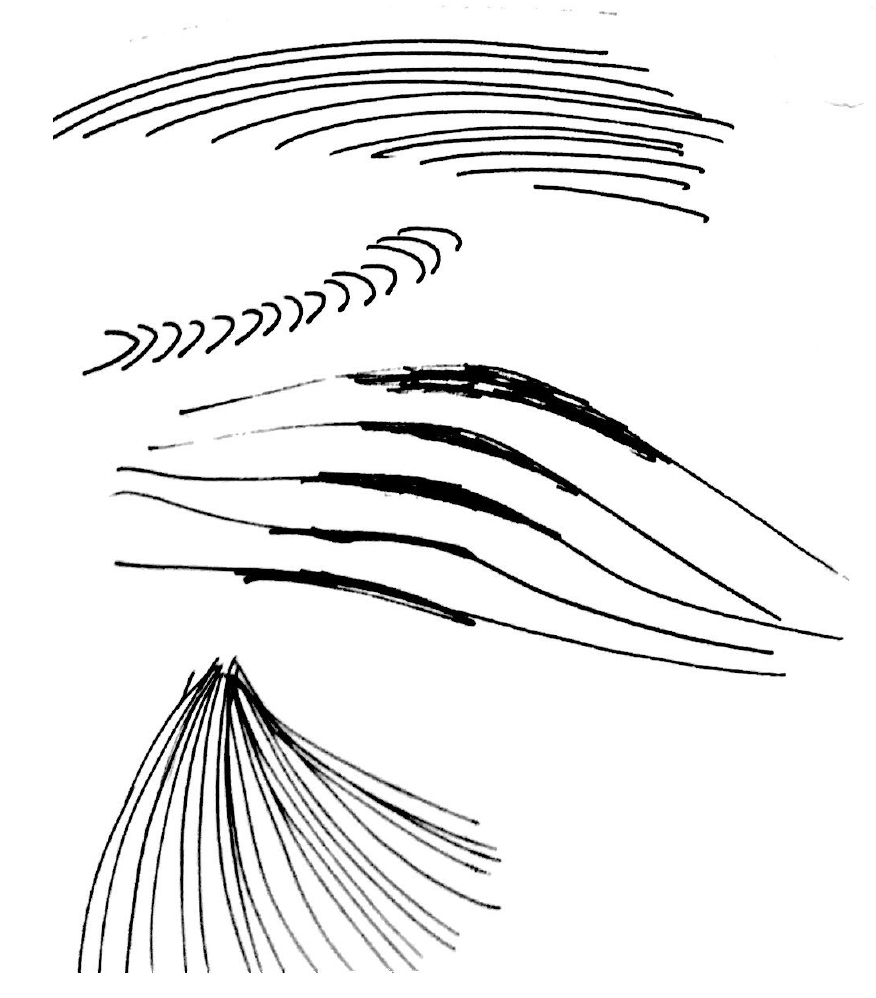
LINES IN A MESHWORK
A meshwork is an entanglement of life, becoming, and growth lines. It comprises several different paths of movement of an inhabitant, which meet, run alongside, overlap, and go around each other. These human and non-human activity movements are recorded in a lived space. The nature of the paths can be deduced from the relationships formed where the paths intersect. We don't work with abstract, geometrical lines but with supposedly real lines of movement and growth in life. And the places or moments where lifelines intersect or bind are re-imagined as sites of external contact.
The lines are constantly moving, growing, and evolving. They are lines that indicate interaction. Several types of lines were considered to create a meshwork of entangled lines of life, growth, and movement and to exhibit a field of movements. Each line has its' own characteristic. Similar lines formed a pattern that represented a specific type of movement. There was also the use of gesture lines to capture form and movement. Because the lines are unbounded, the endpoints of a line can be seen or appear to move towards infinity. Lines that work together and in rhythm can create patterns and textures.
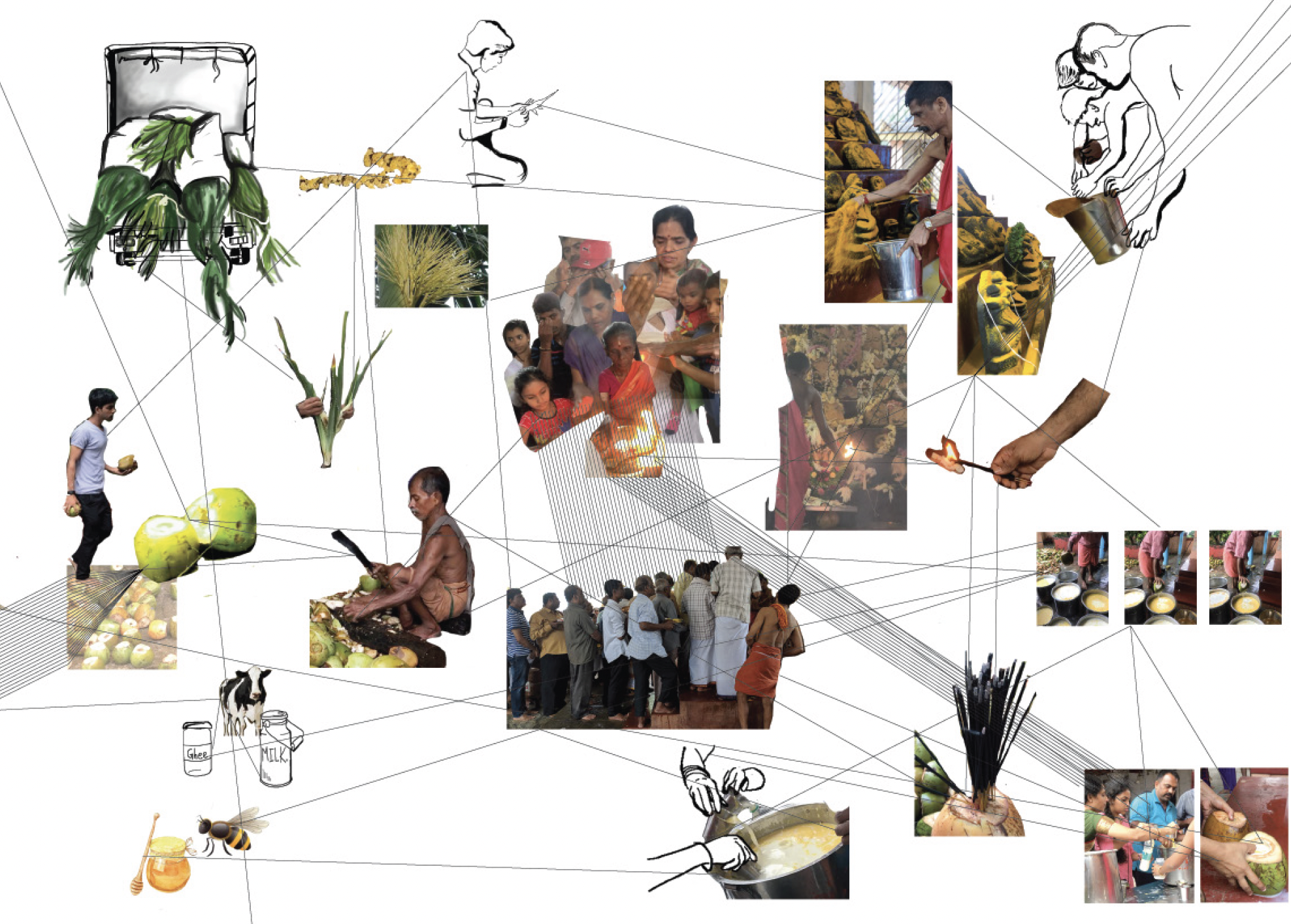
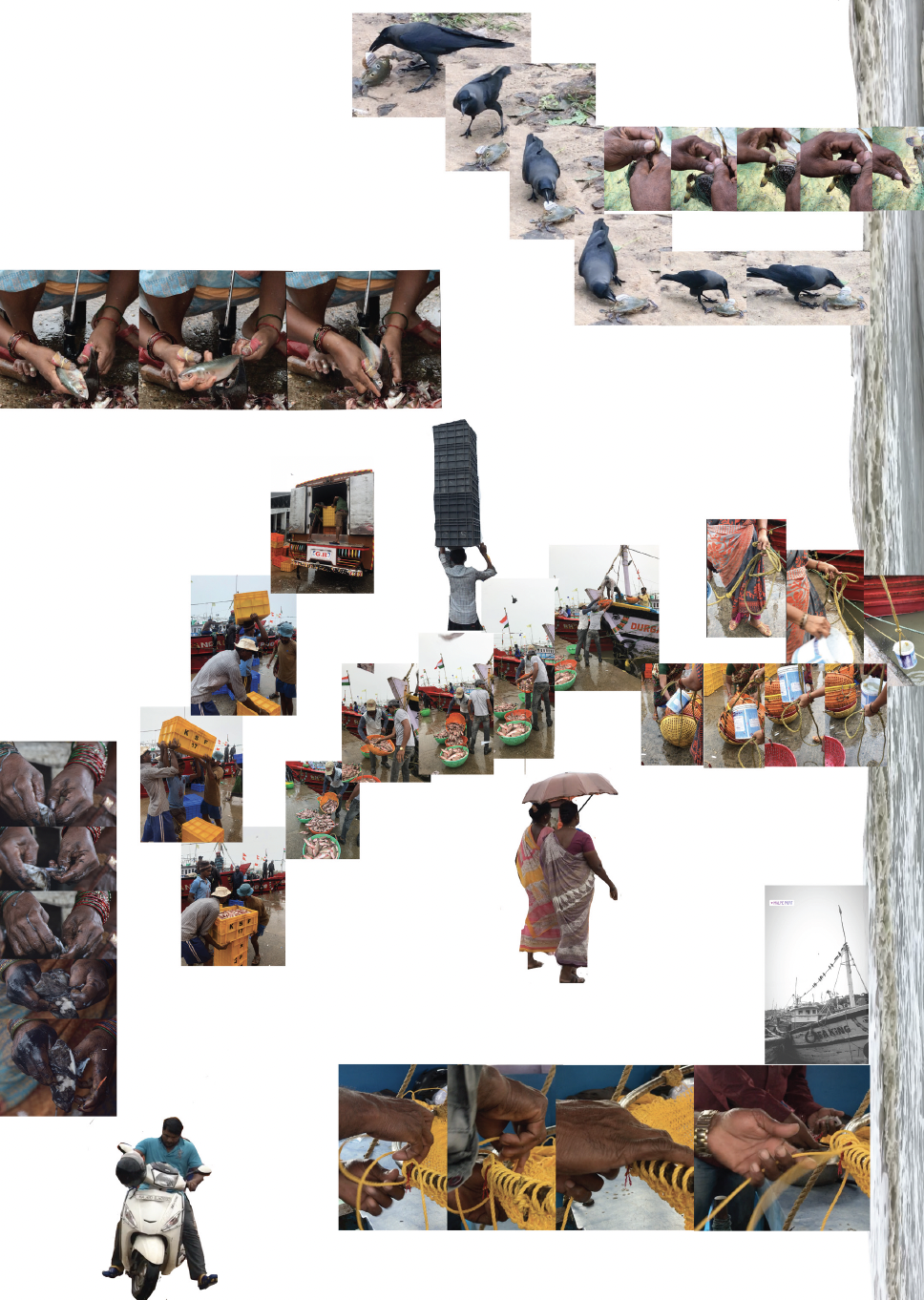
VISUALISING THE MESHWORK
Moodbidri
Moodbidri was in full bloom when I went on the field trip. The "Venkat Rammana Swamy Temple" grounds were decorated for the Nagapanchami festival. Several practises were taking place at the same time. To emphasise the complexity of several paths, both human and non-human, the meshwork could be imagined as messy, intricate, and vast. This meshwork allows one to understand and see the temporal landscape and introduces a completely new way of seeing and recording movements. There are several interweaving and overlapping moments, such as the making of the garland, the cutting of the coconut, the process of the aarti, and the opening of the flower, that can be denoted by various types of lines.
Malpe
When viewed as a meshwork, Malpe Fish Market demonstrates several practises that are carried out at various locations. These areas are referred to as knots. The practises are carried out as residents walk along the paths. Line abstractions bring out movement, which leads to the formation of a knot, which can then lead to the formation of a path. These moving bodies along paths tell stories that help us understand relationships and constantly transform multiplicities.

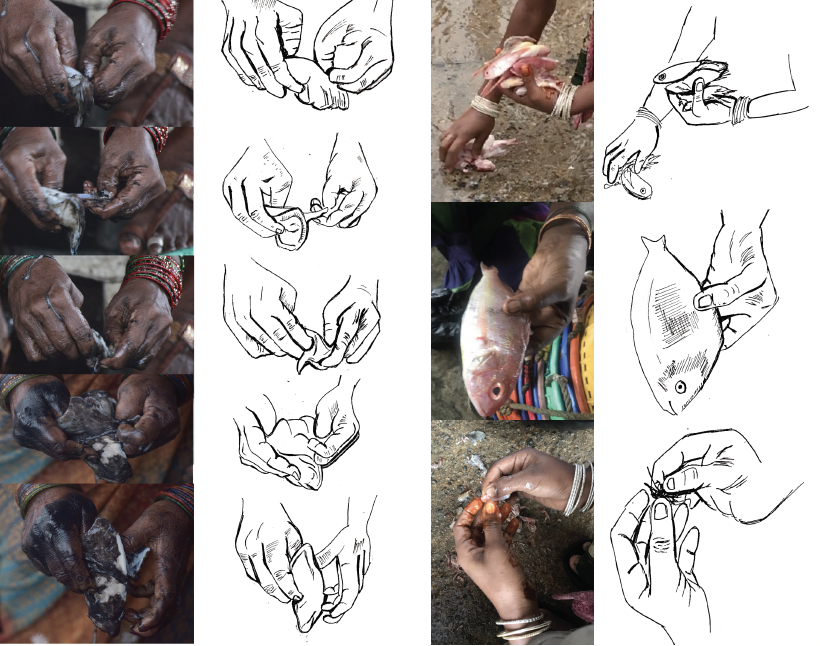
VISUAL TREATMENT
The visual style was inspired by photographs and visuals gathered in the field. The movements in/across the places I visited describe the narrative of meshwork. My final outcome included identifying practices that contain movement and then using them as characters. If cleaning is the character, cleaning is represented by lines and knots. To create the meshwork, the final visual style, which is hand drawing, was derived from photographs.
The images or videos were first arranged in a chronological order. As a result, the part of the body or the instrument in motion was magnified. The basic drawing was created with graphite pencils, and the detailing was completed with Micron pens. These sketches were later scanned individually and vectorized in Illustrator so that they could be used at any scale depending on the lines.


PRODUCTION
The layout was done in Adobe Illustrator. To keep it more organic, the lines were made with the pen tool and the brush tool. The red lines represent the paths formed by several movements tied together in a knot. The drawings were placed on the canvas based on the artist's field experience. Lines were later built using data abstractions and other appropriate visual styles. Dashed lines, dotted lines, straight lines, and lines made up of curved or vertical lines were all present. The canvas allowed for the creation of infinite lines that represent never-ending paths. The artboard was set up at the end based on the size of the lines and the visuals.
The final two Meshworks were printed on HP printing paper and matt laminated at Bangalore's Kolor Kode. The Moodbidri and Malpe meshworks are 5ft x 6ft and 6ft x 6ft in size, respectively. The size of the two meshworks allows them to make an impact and pique the reader's interest. The reader can get up close and personal with the details, follow the lines, and comprehend the concept of movement through it.


2022 © Vedika Lall